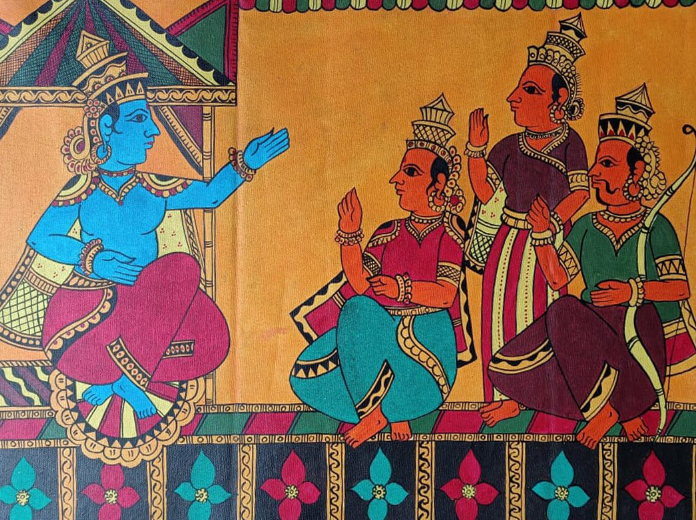Chitrakathi Traditional Art
Chitrakathi is a traditional Indian folk-art form that involves visual storytelling through paintings, puppets, and leather shadows. It is practiced by the Thakar tribe who reside in the small village of Pinguli near Kudal in the Sindhudurg district of Maharashtra.
History and Background
The Chitrakathi art form dates to the 17th century. The Thakar community who practices it belongs to a scheduled tribe with a population of around 2,000 people divided into 36 sub-castes or group-castes. Historically, many individuals from this tribe made a living as craftsmen and entertainers, traveling from village to village to narrate epic stories from the Ramayana, Mahabharata, and other texts using visual aids.
Under the guise of storytelling, some also allegedly worked as spies for local rulers to gather political intelligence from common people. During the reign of the Maratha kings, the Thakars were said to be active in establishing contact with villagers to uncover secrets.
Styles
There are four main Chitrakathi styles:
- Leather Shadow Puppets: Two-dimensional leather profiles of characters that cast colorful shadows on screens when backlit at night.
- Stringed Wooden Puppets: One-and-a-half-foot tall wooden string puppets painted to represent heroes, queens, demons and servants. Expert puppeteers orchestrate shows accompanied by singers and drummers.
- Picture Stories: Series of scroll paintings depicting tales from Indian epics that have been with the community for over 300 years. The painter-singer narrates the stories through songs with musical accompaniment.
- Bullock Art Shows: Elaborately decorated bulls travel with their owners from village to village performing in front of houses for alms.
The Chitrakathi art form brings together vivid visuals, music, song and narrative to create a unique and culturally resonant storytelling experience that provides a window into the myths and folklore of the Thakar tribe. Though small, their distinctive performative traditions keep rural legends and tales alive through the generations.


